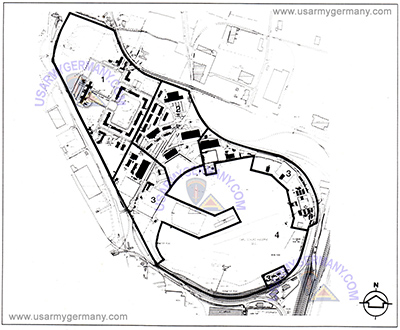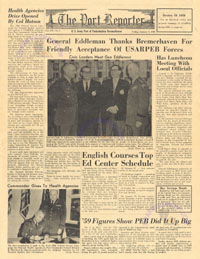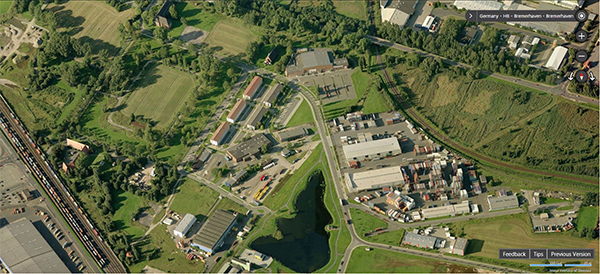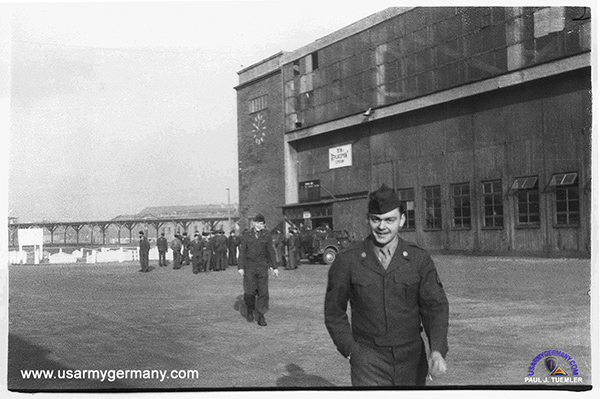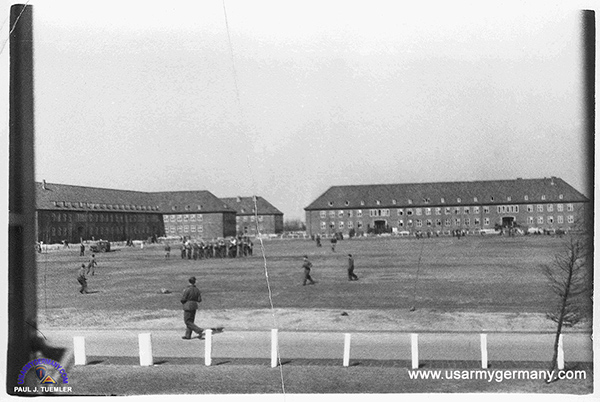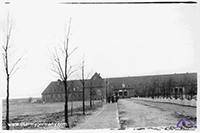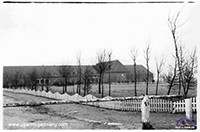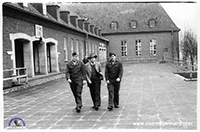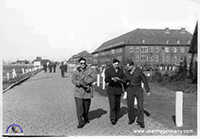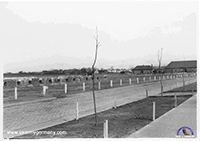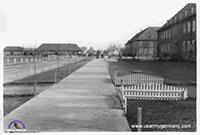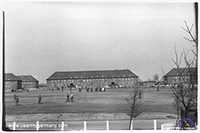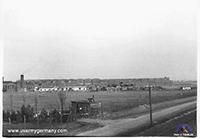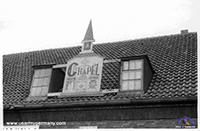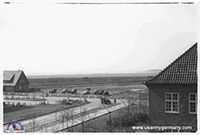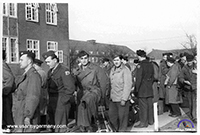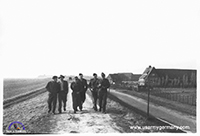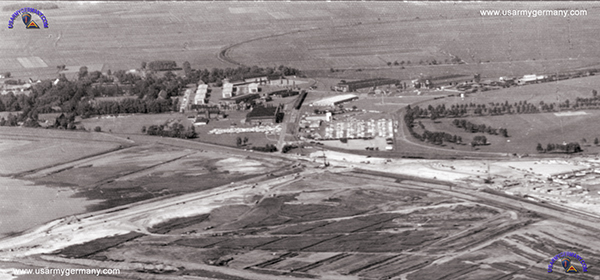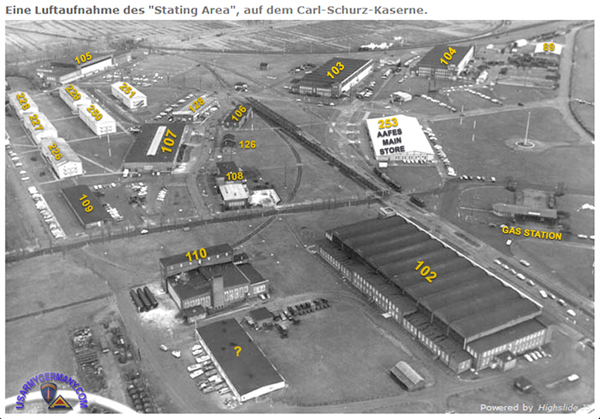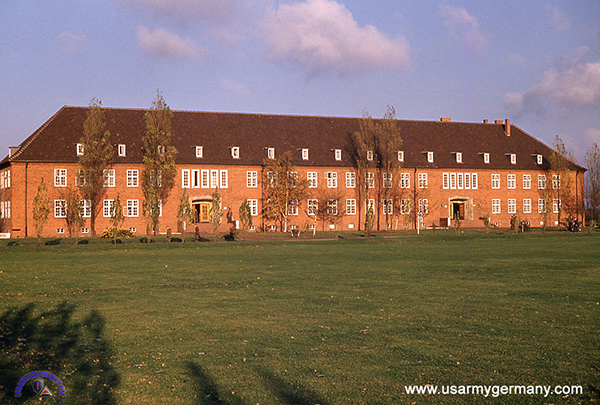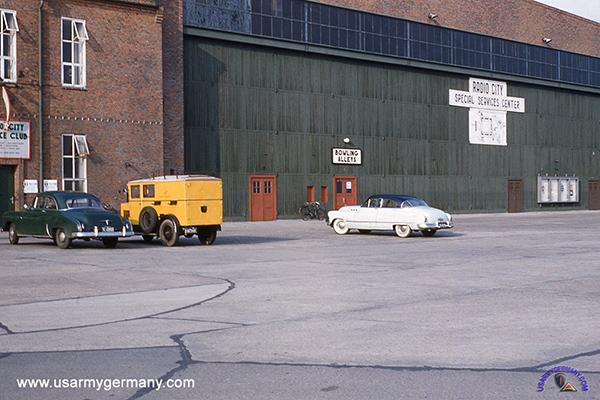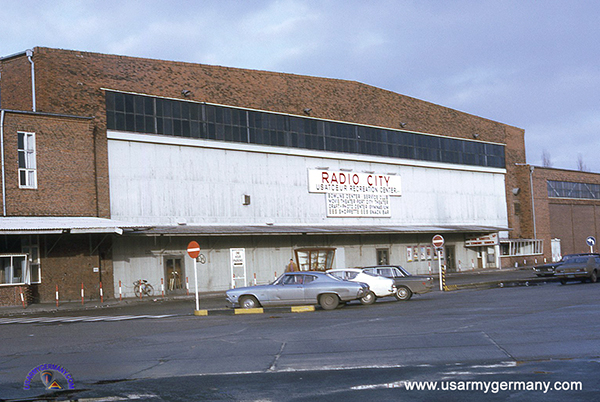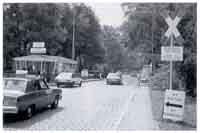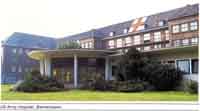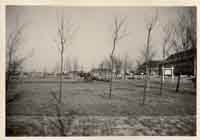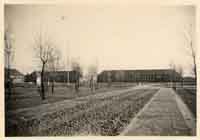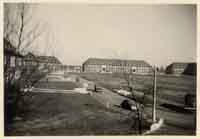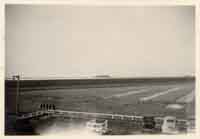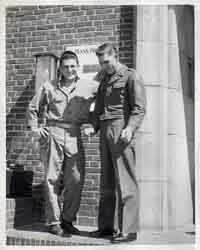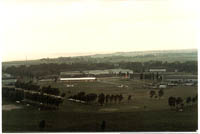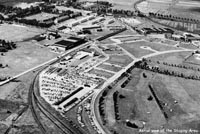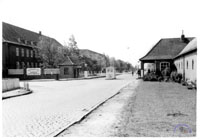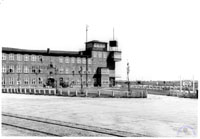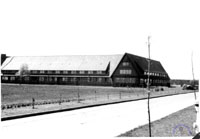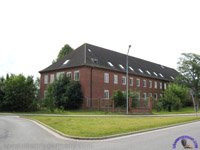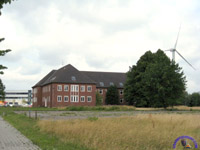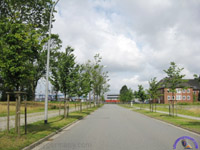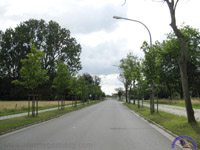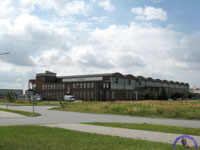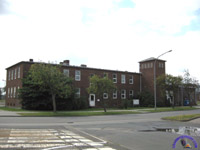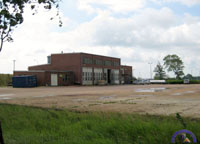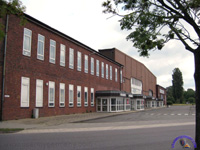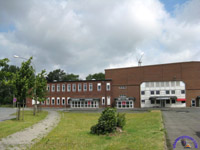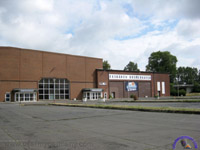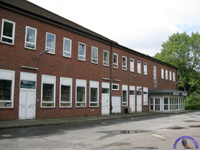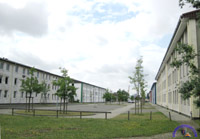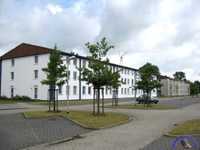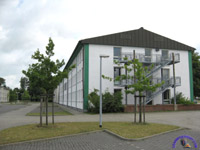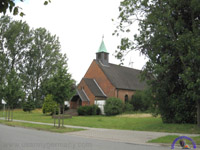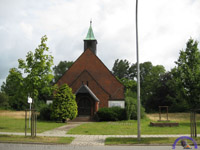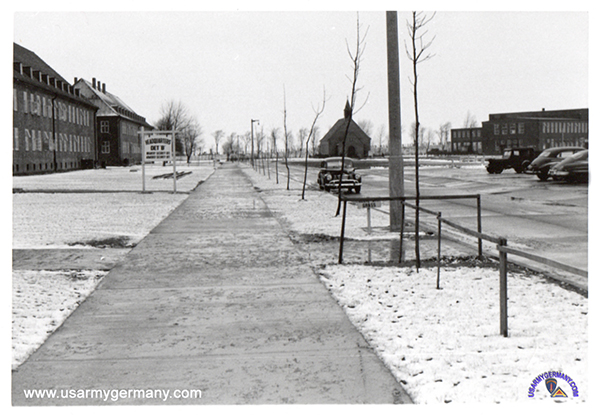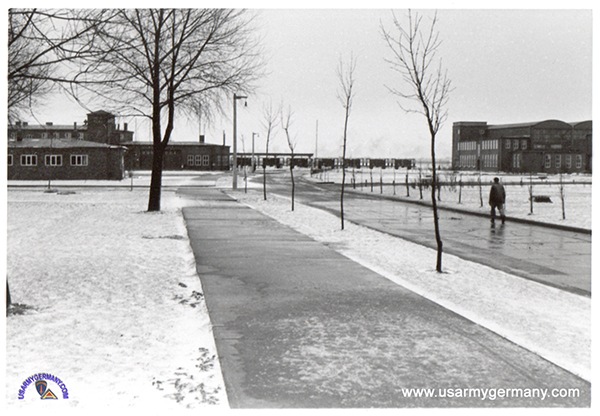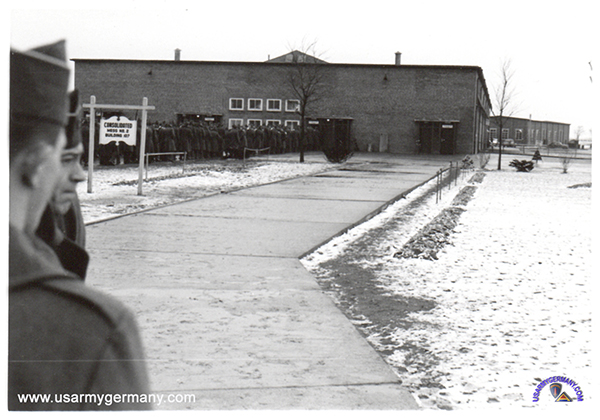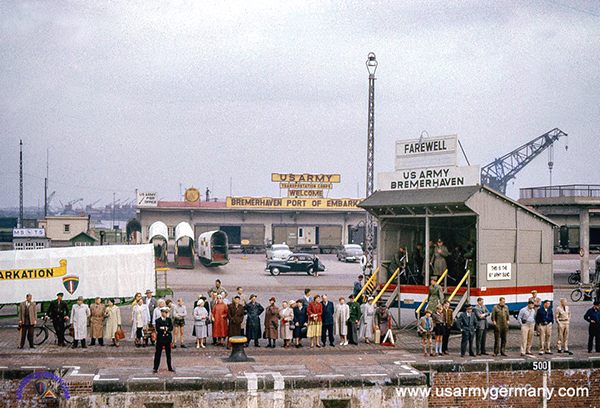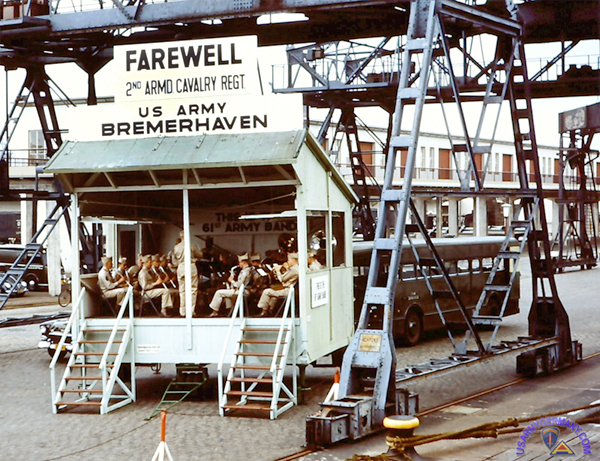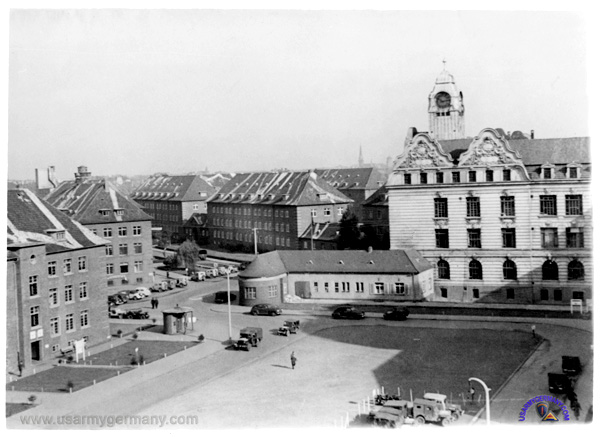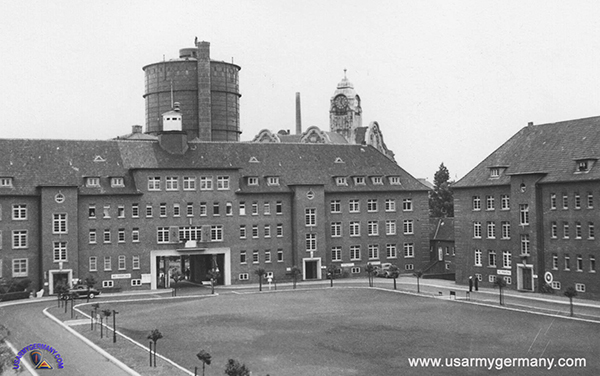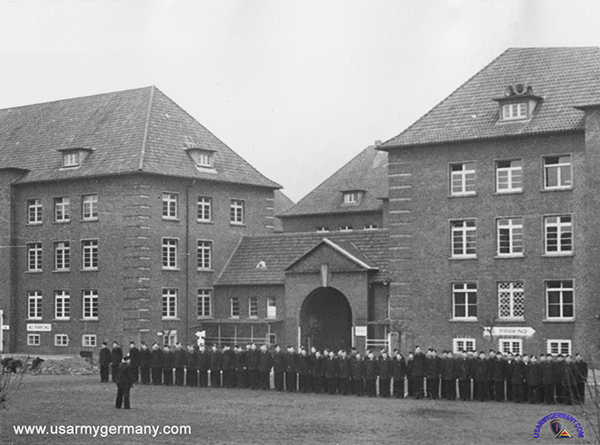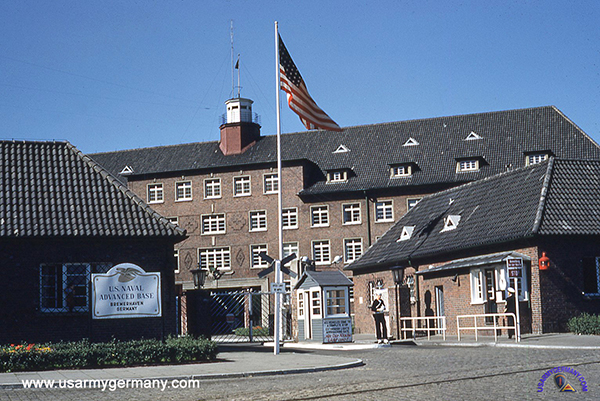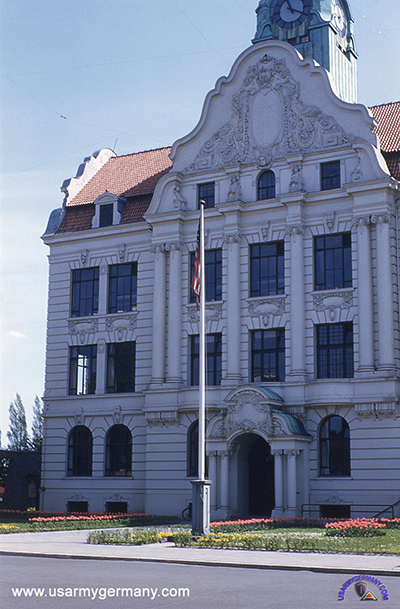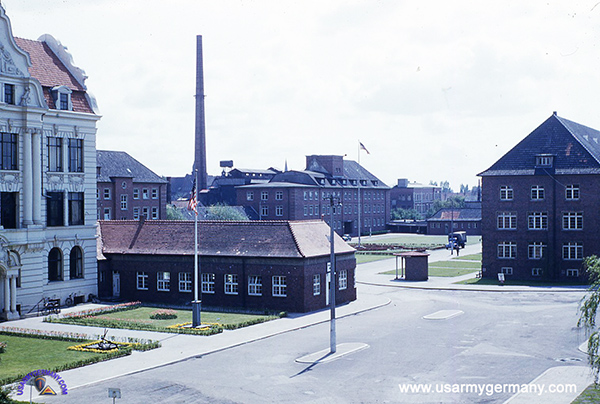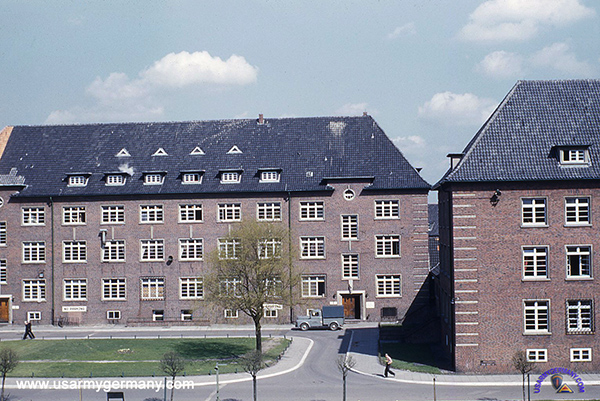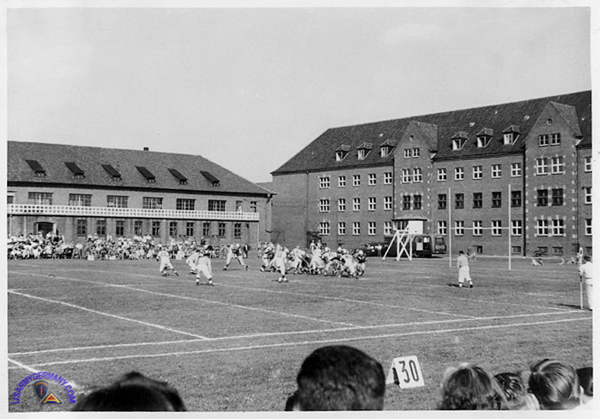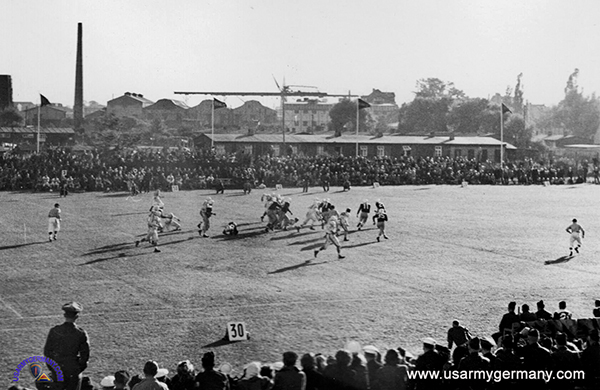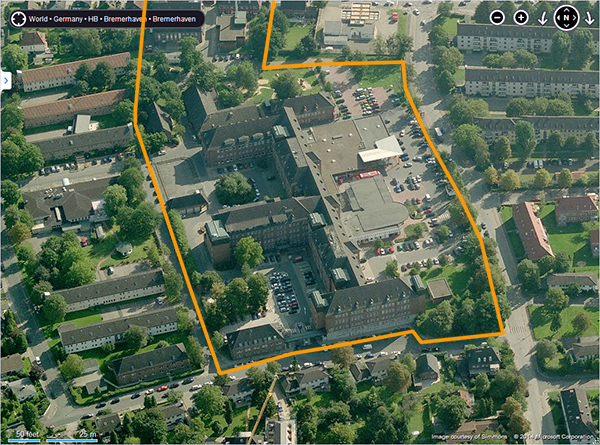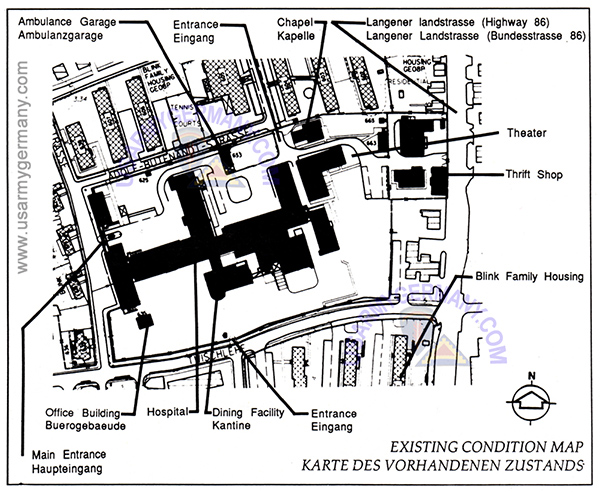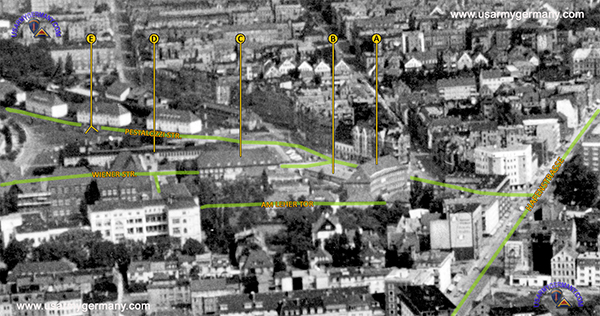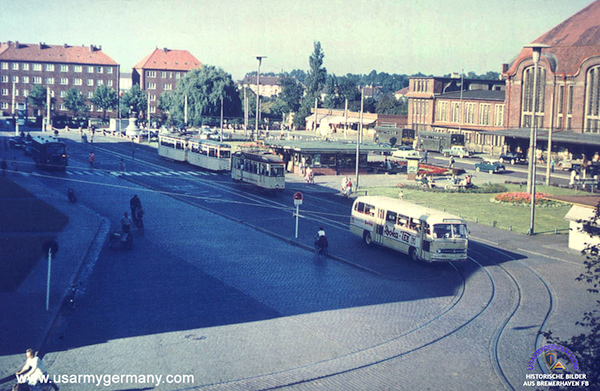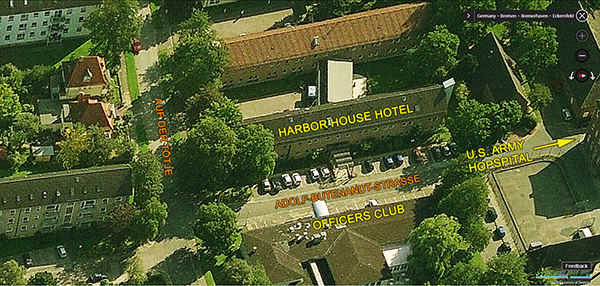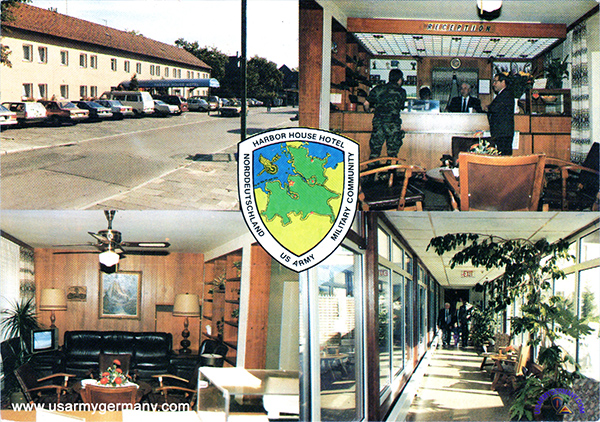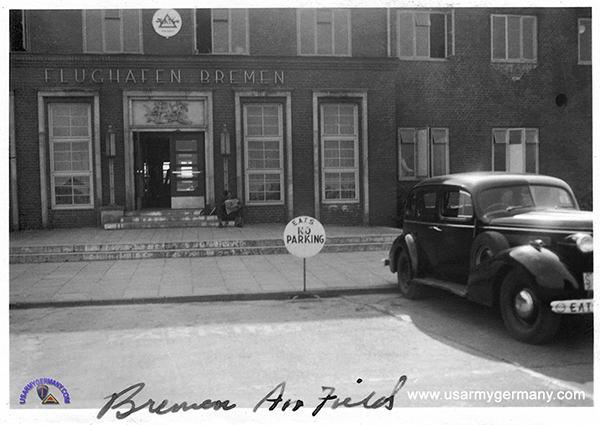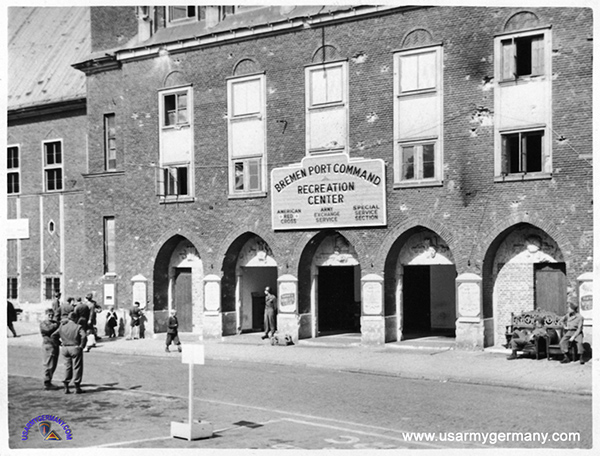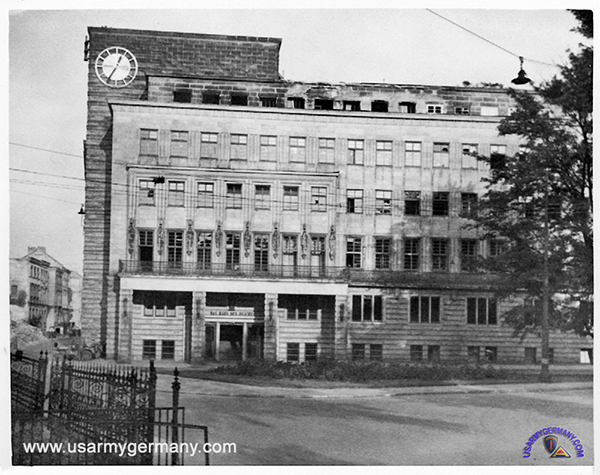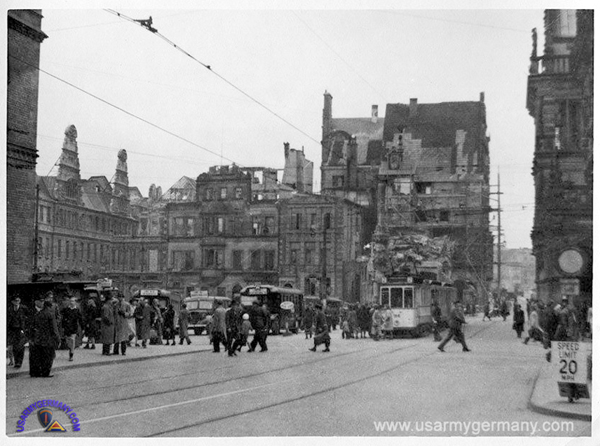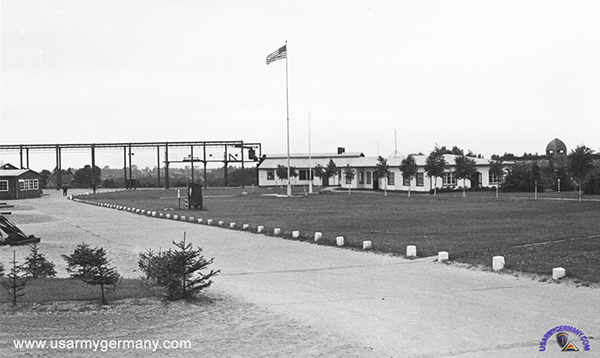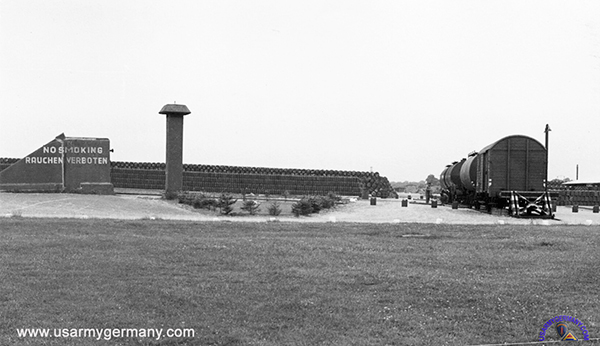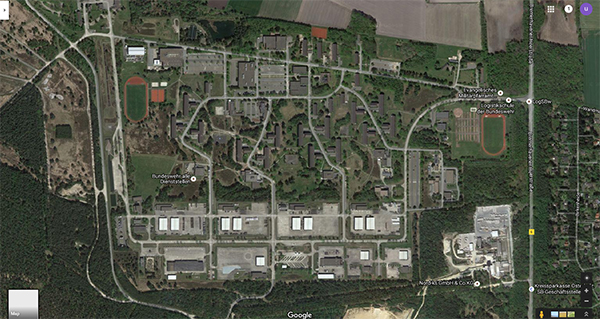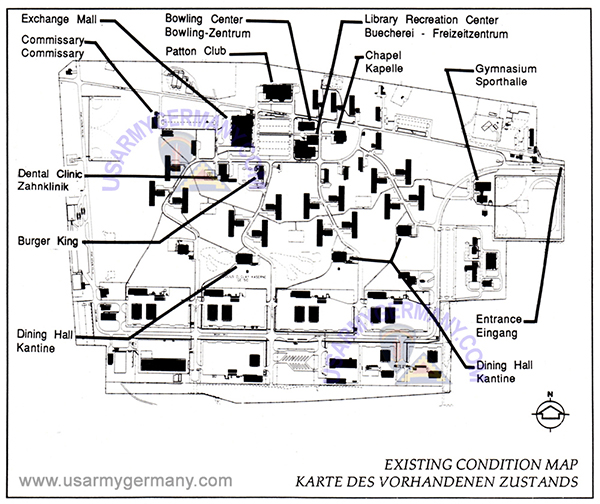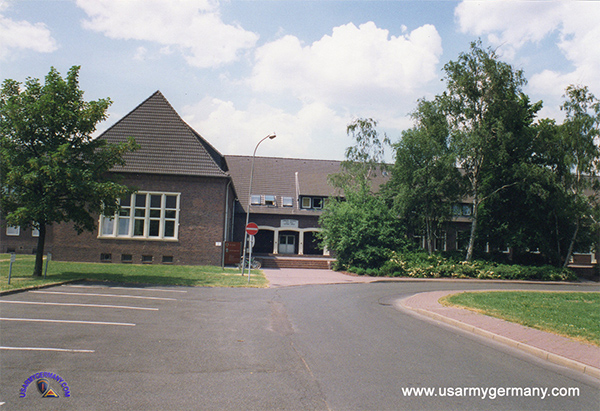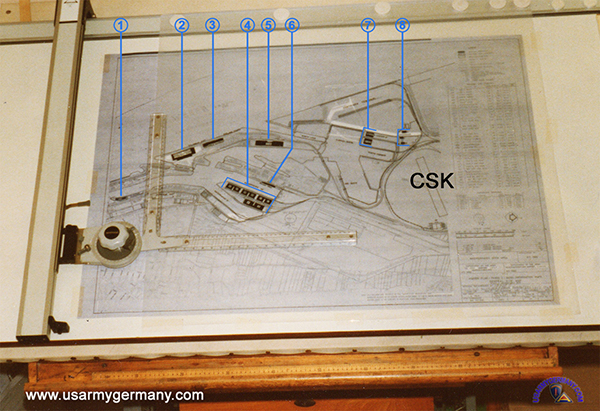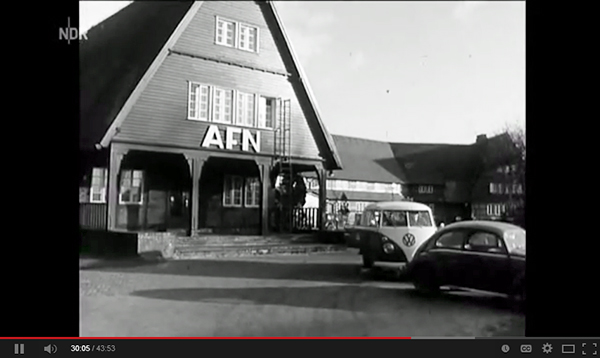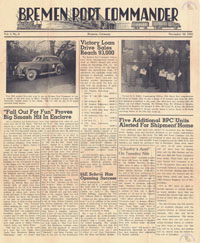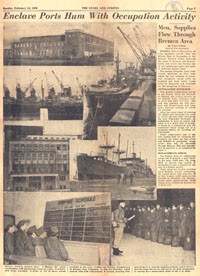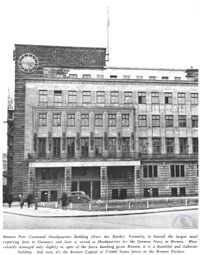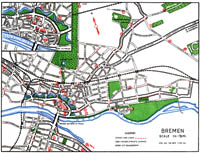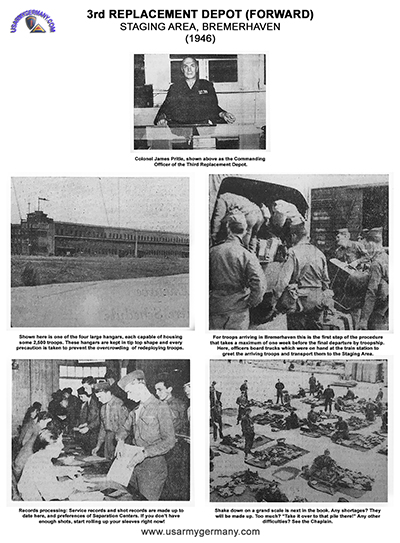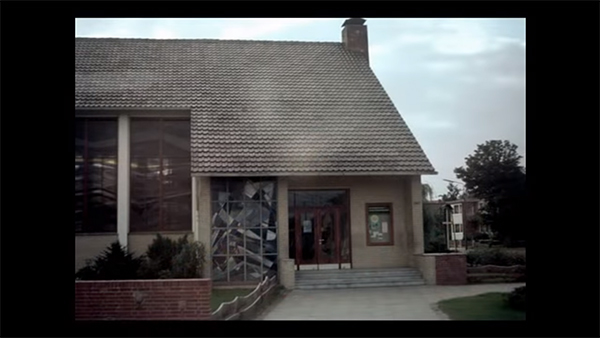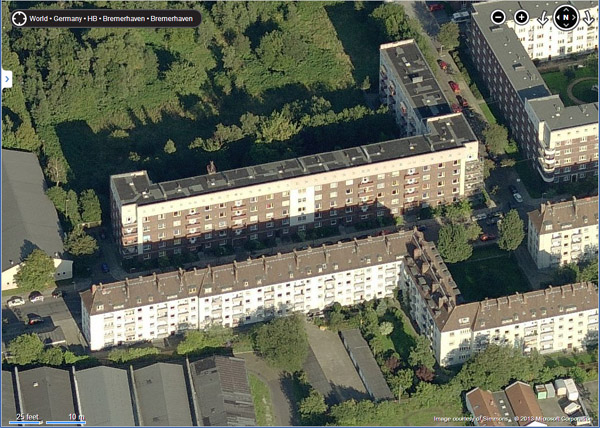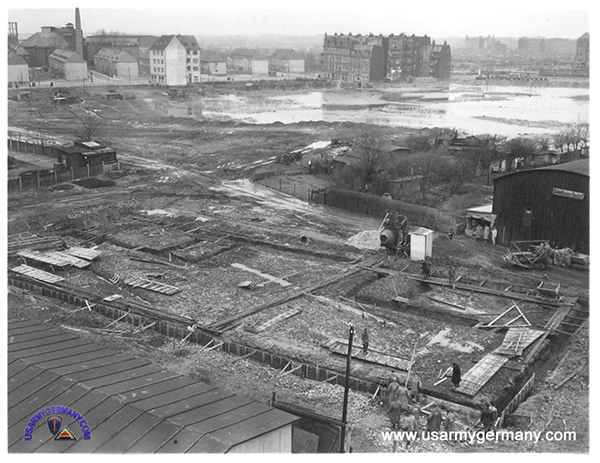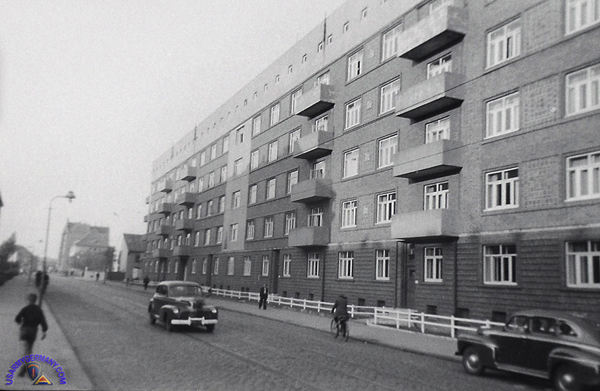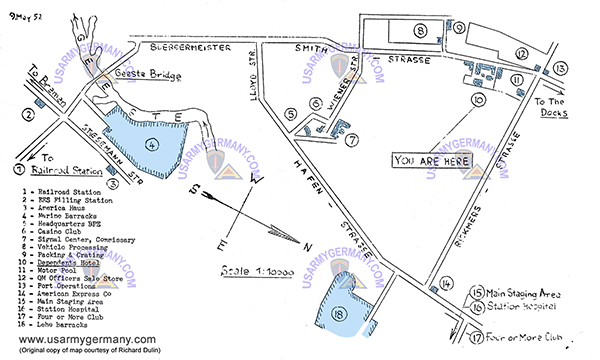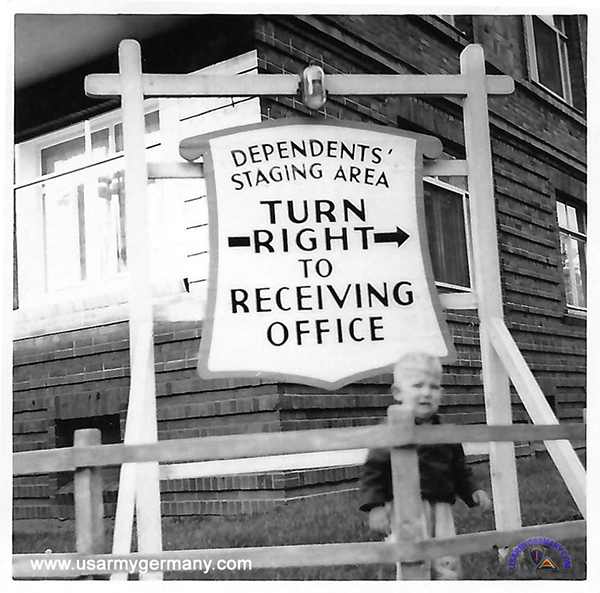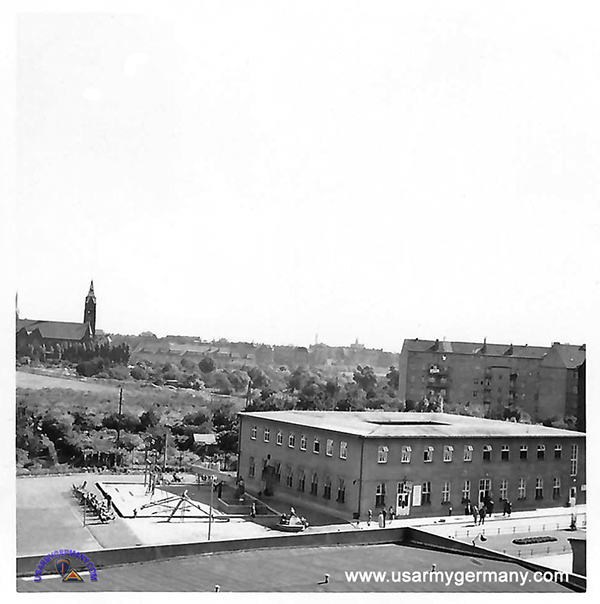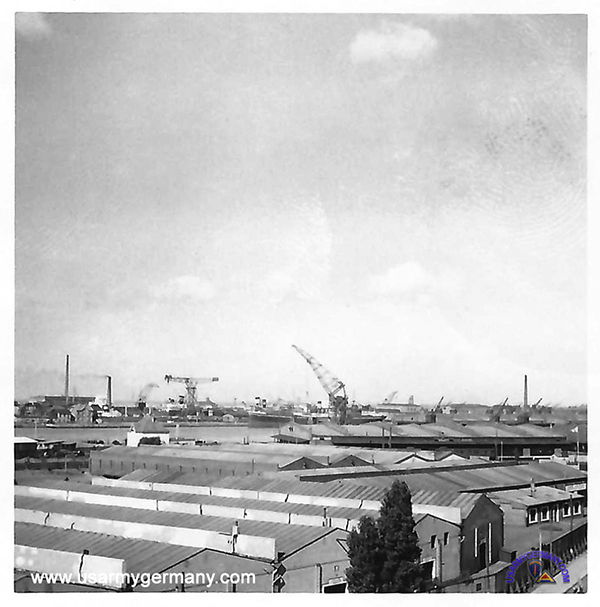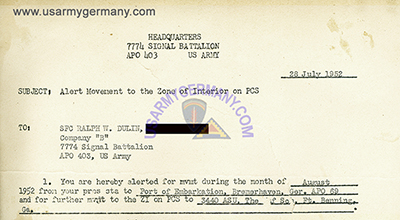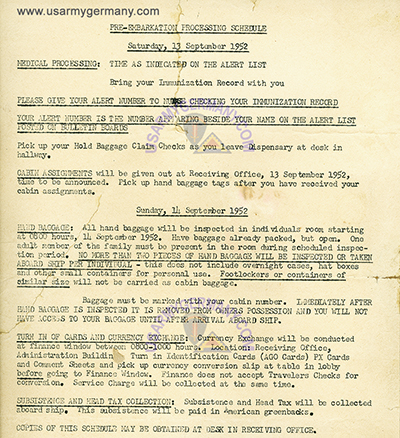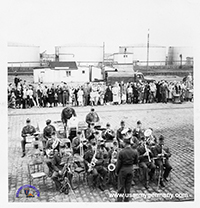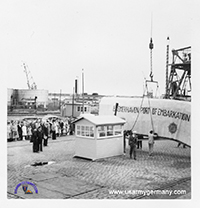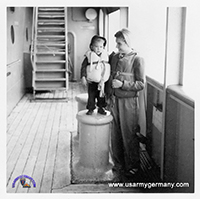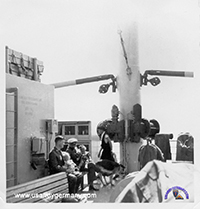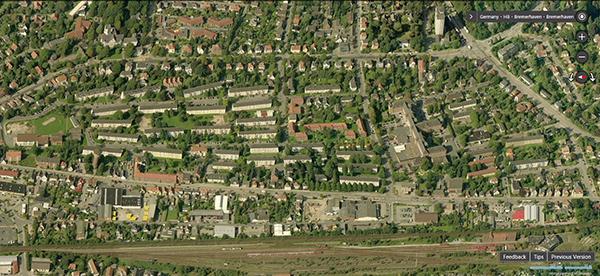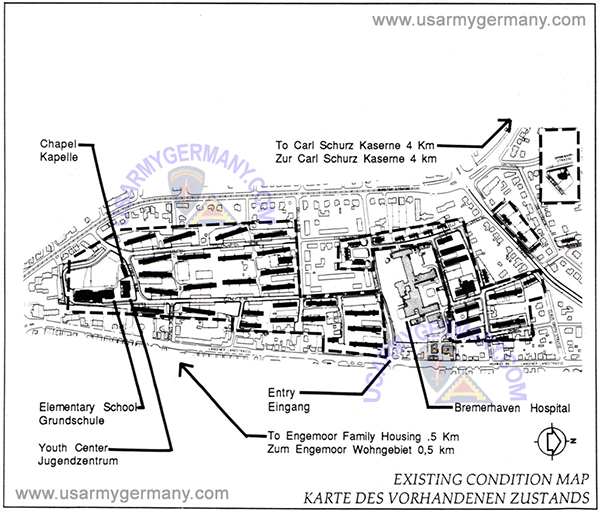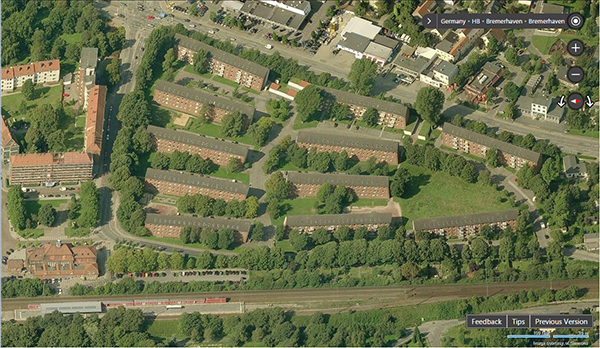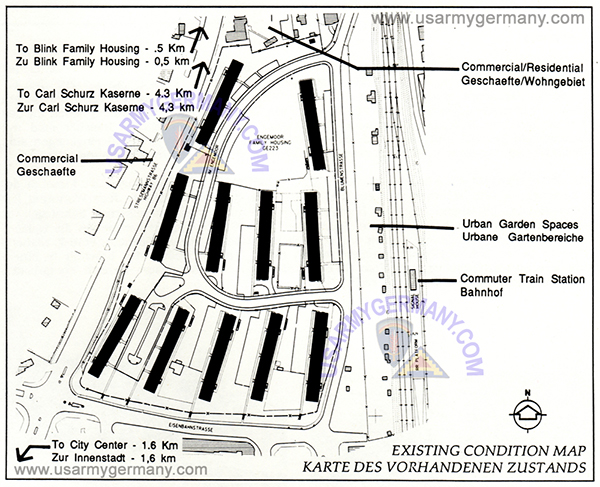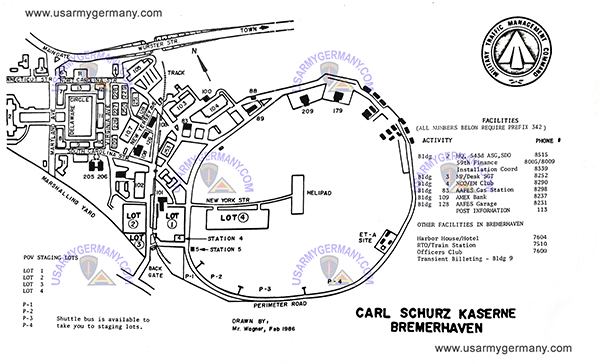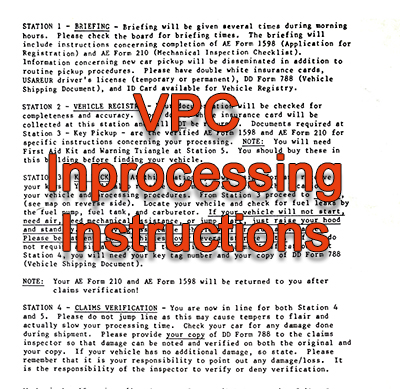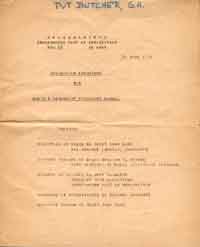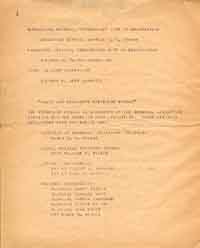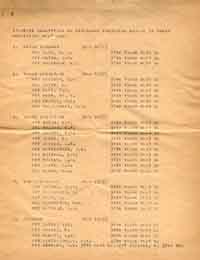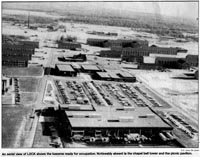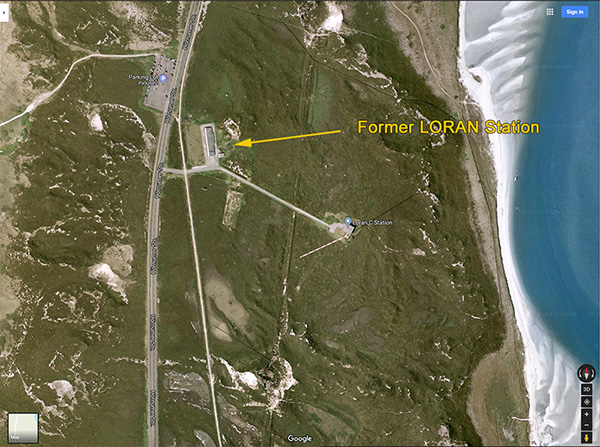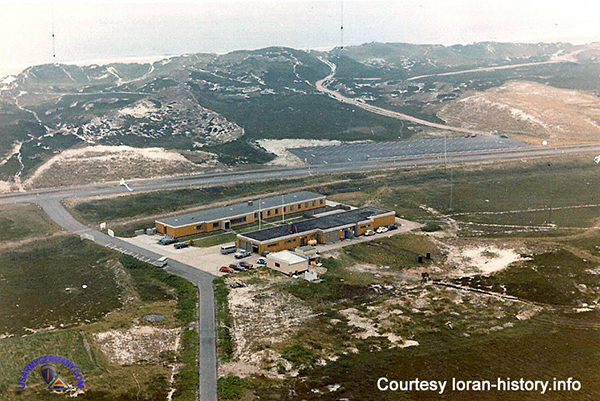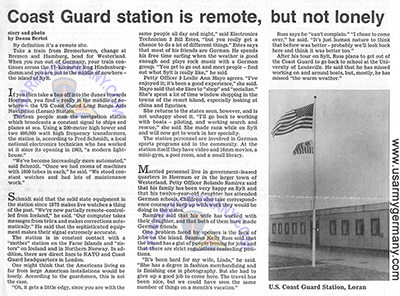Click here to open 'USArmyGermany' frameset
BREMEN BARRACKS |
||
BREMEN ARMY HOSP |
NAVAL ADVANCED BASE |
|
NORDENHAM PORT |
||
DRANGSTEDT KASERNE |
SOEGEL |
|
FLENSBURG |
TERMINAL COMD HQ |
| MAPS |
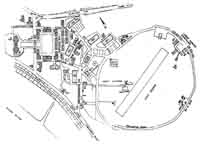 1. Carl Schurz Kaserne, about 1980 |
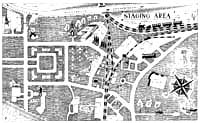 2. Staging Area (CSK), about 1965 |
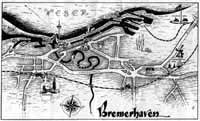 3. Bremerhaven US facilities, about 1965 |
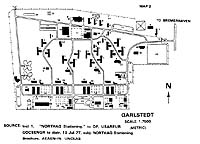 4. Lucius D. Clay Kaserne, Garlstedt |
| 1989 Map of the Carl Schurz Kaserne. This map was prepared in 1989 as part of an Installation Design Guide presented to the Military Community Commander in 1990. The map divides the installation into four (functional) zones - Administration/Barracks; Community Facilities; Industrial; and Undeveloped. Click on the thumbnail to view a larger format of the same map. |
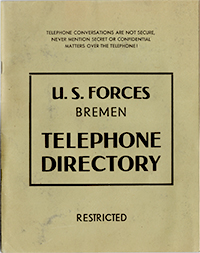 1. Bremen Telephone Directory, 1 July 1945 |
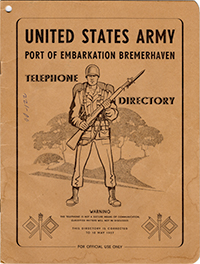 2. Bremerhaven POE Tel Directory, 10 May 1957 |
|
 |
Click on thumbnail of newspaper to read the front page.
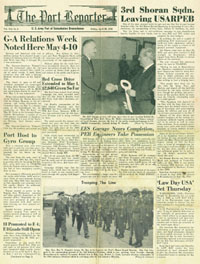 1. The Port Reporter, 25 Apr 1958 |
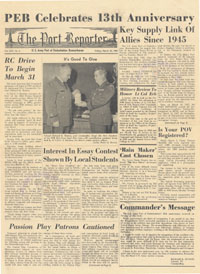 3. The Port Reporter, 18 Mar 1960 (Pages 1, 6) |
 |
|
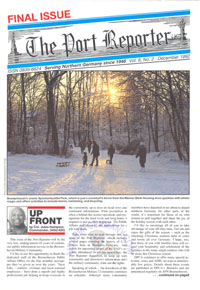 4. The Port Reporter, Dec 1992 |
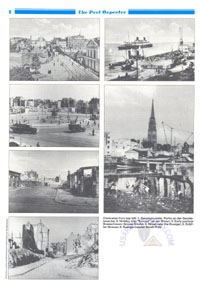 5. Final Issue - 47 years of memories 1, 2, 3, 4, 5 |
|
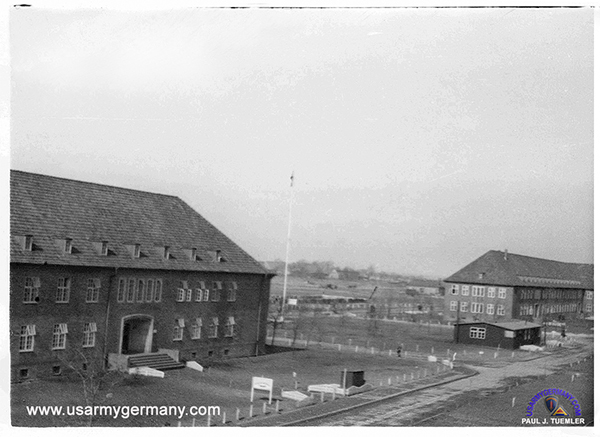 Barracks buildings 8 (left) and 7 (far right), 1946 (Paul Tuemler) |
|---|
 41 . Mess Hall on left |
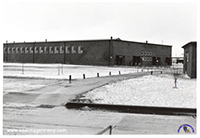 42. Mess Hall |
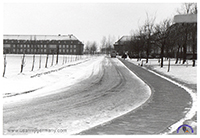 43. Quadrangle |
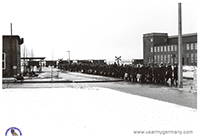 44 . Casuals redeploying |
|
| |
||||
|
 Another busy day at Columbus Quay as a troopship leaves for the land of the round door knobs, 1954 (Tony Vankovich) |
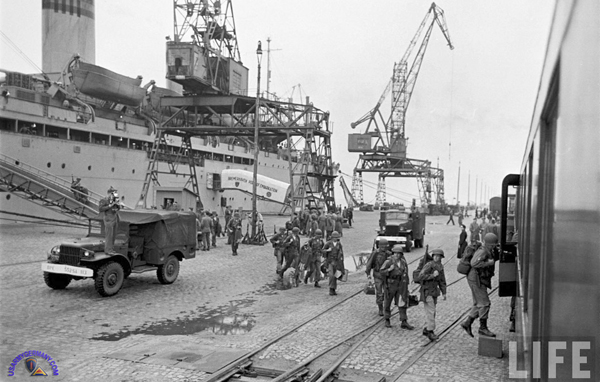 4th Inf Div arrives in Bremerhaven to augment 7th Army, 1951 |
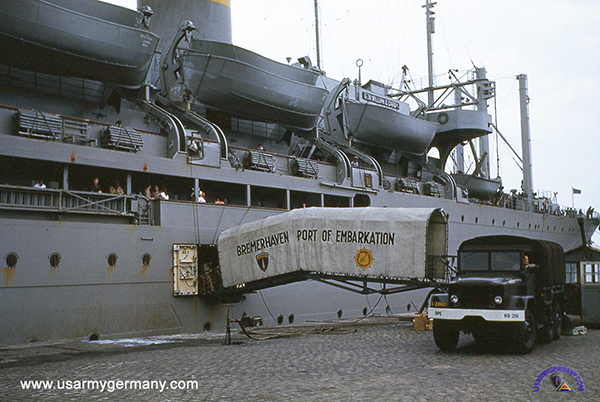 The General William O. Darby, pierside at Bremerhaven in 1957 (Webmaster's collection) |
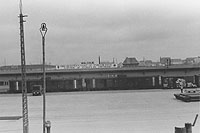 1. Bremerhaven POE, 1951 |
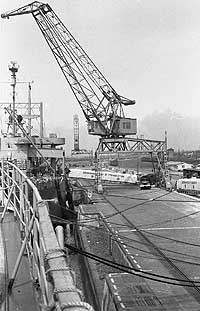 2. Large mobile crane at BPOE used for loading equipment and supplies, 1951 |
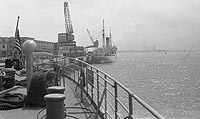 3. Ship pulls away from dock, 1951 |
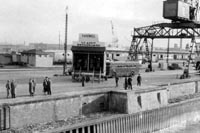 4. Farewell, mid 1950s |
 5. Bremerhaven, 1950s Click here to supersize |
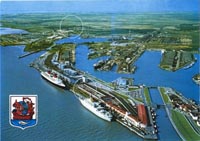 6. Columbus Quay, prob. 1960s |
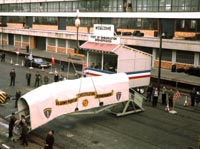 7. Military personnel and civilians at the dock as the USNS Darby arrives in late summer of 1961 |
|
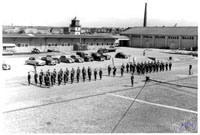 8. |
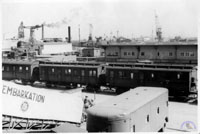 9. |
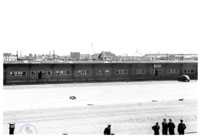 10. |
|
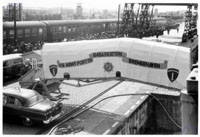 11. Back to the Land of the Big PX |
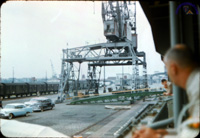 12. USNS Randall, July 1956 |
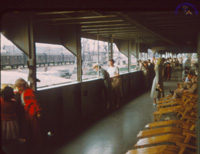 13. USNS Randall, July 1956 |
|
| |
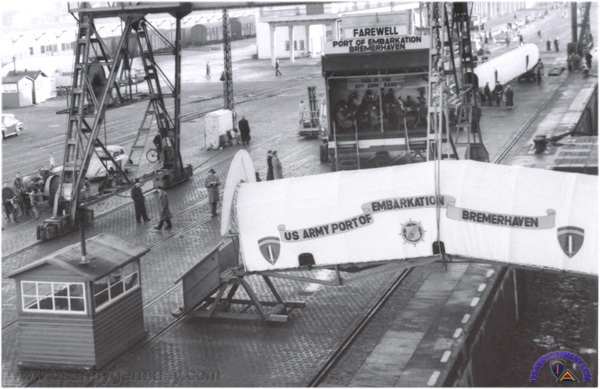 A Gyroscope troopship is about to leave Bremerhaven for the US, 1957. Farewell and Auf Wiedersehen! |
| |
||||
|
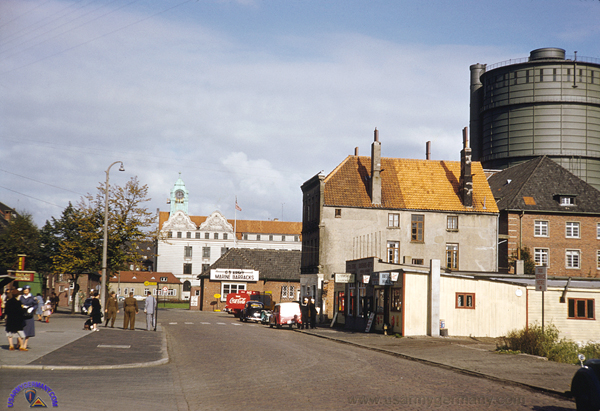 Access road to the Army gate (center) of Marine Barracks, 1950s |
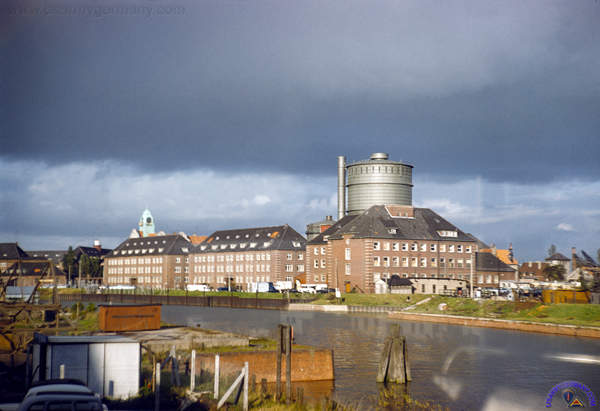 View of Marine Barracks from the Ludwigstrasse bridge, 1950s |
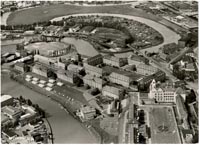 1. Marine Barracks |
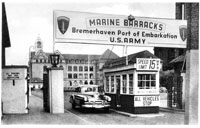 2. Marine Barracks main gate, 1951 |
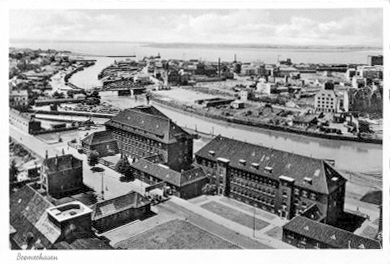 3. Aerial view of Marine Barracks main gate area, 1954 |
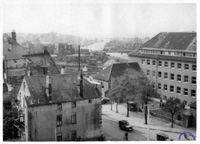 4. Marine Barracks |
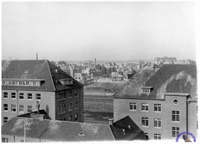 5. Marine Barracks |
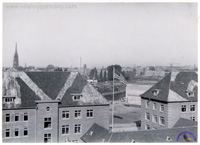 6. Marine Barracks |
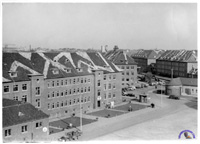 7. Marine Barracks |
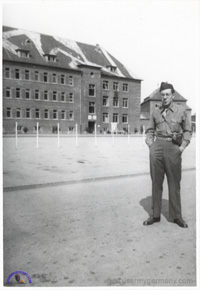 8. Marine Barracks |
|||
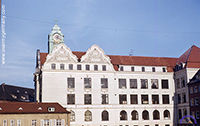 9. Administration building |
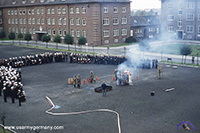 10. Fire demonstration |
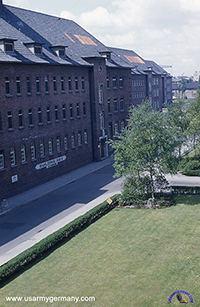 11. Building #4 |
||
|
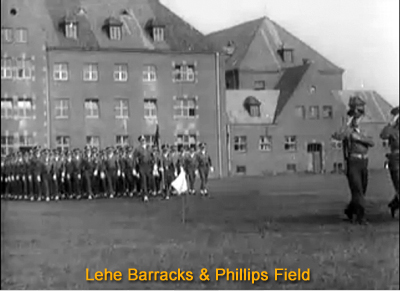 Gen Wade H Haislip inspecting 421st Army Band & Honor Guard, 1948 (movie clip on USHMM website) (Bremerhaven segment starts at 4:28 min into clip) |
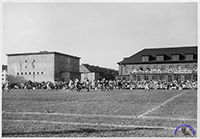 1. Phillips Field |
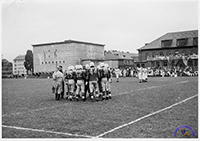 2. Phillips Field |
|||
|
|
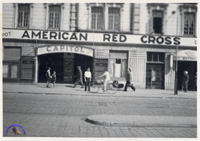 1. Capitol Movie Theater and Spot Club |
||||
|
||||
|
||||
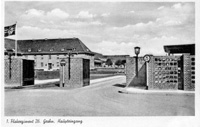 A. Grohn Kaserne |
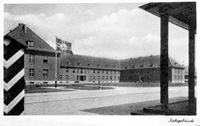 B. Grohn Kaserne |
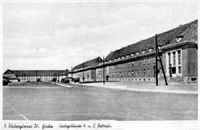 C. Grohn Kaserne |
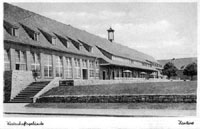 D. Grohn Kaserne |
|
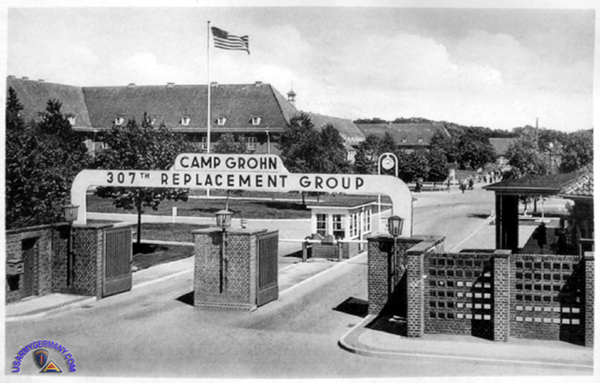 Main Gate, Camp Grohn, early 1950s |
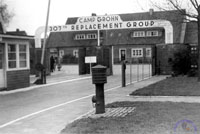 1. 307th Repl Depot, 1952 |
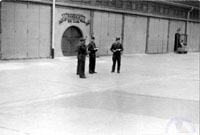 2. Transient EM Club, 1952 |
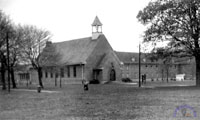 3. Post Chapel, 1952 |
||
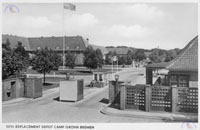 4. 307th Repl Depot, 1951 |
||||
|
|
||||
|
|
|
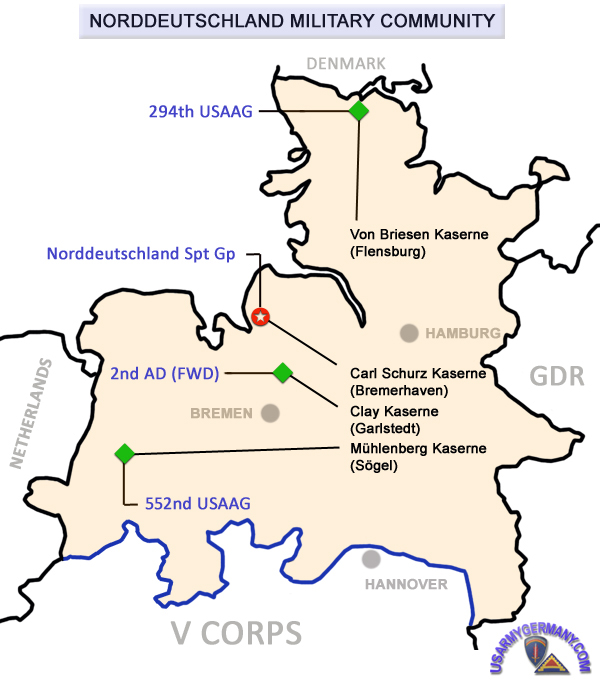 Map of Norddeutschland Military Community, early 1980s |
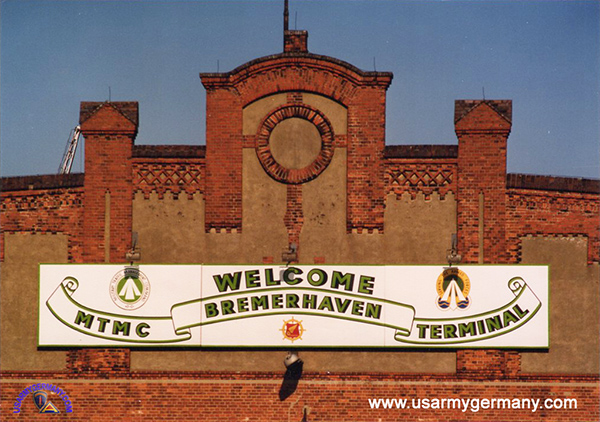 MTMC Terminal sign on Warehouse "A," Bremerhaven Dock Area (Uli Urban) |
In 1982, I changed positions and started working as the graphic artist and illustrator for the TASC (Training & Audiovisual Support Center). In this job I produced various graphical materials from conception, design and layout, to final artwork and printing. The products I worked on included posters, charts, flyers, signs, brochures, documents and certificates as well as templates for newspapers and newsletters. I also prepared technical drawings of ships, aircraft, military vehicles, as well as military logos, symbols and maps that were used for slides and overhead transparencies needed for command briefings.
In preparation for annual maneuvers in the command's area of responsibilty, I had to prepare special charts and singage for units in Flensburg, Helmstedt, Sögel, Basdahl and Garlstedt.
The TASC Office was located in Bldg #251 because there was no room for us in the Headquarters building.
The MTMC offices were located in Bldgs #227 and #228 (first floor).
Webmaster note: Additional information provided by Uli can be found on the Bremerhaven POE Page.
You can read more about Uli on his website.
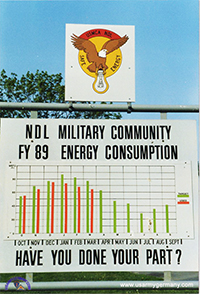 1. Status board - MILCOM Energy Savings Program |
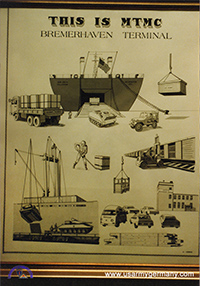 2. Inc drawing for Bremerhaven Terminal |
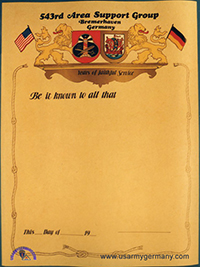 3. Certificate for years of service |
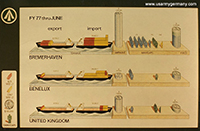 4. Chart prepared for a briefing |
|
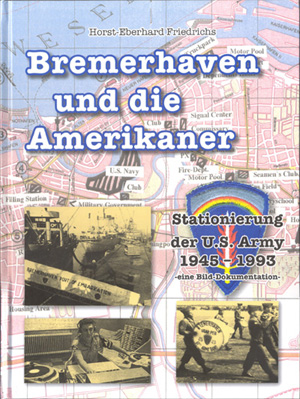 |
|
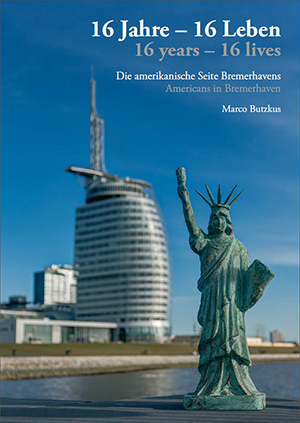 |
|
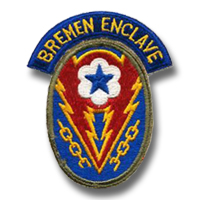 Bremen Enclave Patch
Bremen Enclave PatchWas armored car gunner 1946 in Bremen Enclave, District Constabulary (DC). Cannot find any decent maps of the "Enclave" or little else that I recall. I was in service in the Bremen Enclave from maybe December 1945 till the following year, as I recall. I am now 77 years old - but still hale and hearty considering my "cohort" as the Social Scientists term one's peers...*grin*. I never thought much back on my Service days or told anyone much about them - but a chance discovery recently of the Tamiya kit stirred old memories and by the time I was done making it, I began to wonder if there was any info anywhere at all about the "Bremen Enclave" - and the 'old days' that is how I found your websites earlier (which you forwarded below). |
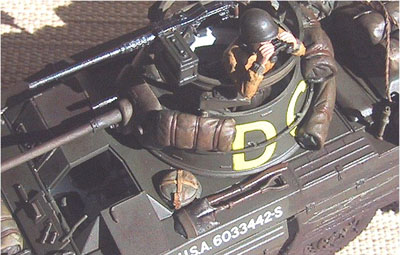 |
|
We were "detached" (they said) from the Infantry and sent north to this Cannon Company. Someone said we were in the Cavalry... and others said Armored... and rumors flew and these designations changed every few days in a bureaucratic confusion. But we kept our same unifom and the blue piping of the Infantry. We were told we were going to be "trained" for a new kind of Police Force or something called the "Constabulary." We were to be "allowed" then to wear jazzy uniforms and jump boots as I recall, and a (coveted) yellow scarf and special (gaudy) helmet liner and we were to be the cat's meow among the Occupying Troops. |
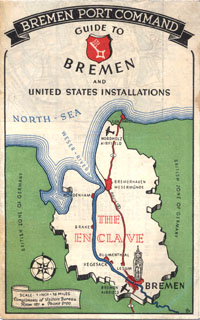 |
|
|
|
|
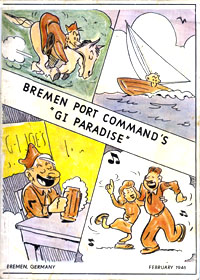 Bremen, "GI Paradise," 1946 |
|
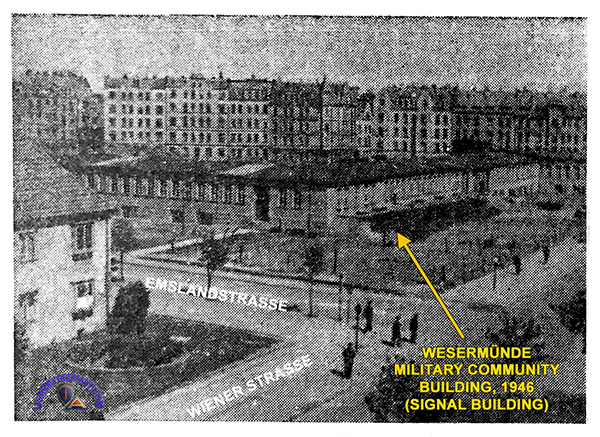
Headquarters of the Wesermünde Military Community was established
in the Signal Building on Wiener Strasse in Bremerhaven (17th REPORTER)
As plans were readied to welcome the first large contingent of dependents to the Bremen Enclave, due to arrive here aboard the U.S.A.T. ''E. B. Alexander'' next Thursday, officials of the Wesermuende Military Community disclosed that an additional 15 applications this week had now raised the total of expected families to 154, all of whom are expected to arrive in Bremerhaven before August 15.
Wives now residing in the community were special guests at the official opening of the Community Cafe on Wienerstrasse last Wednesday evening, when the first meal was served. The dining room, which will be used by all dependents in the Wesermuende Community pending the completion of Cafe Roux in Burger Park on July 1, was completely renovated and constructed for the specific purpose of catering to famllles of military and civilian personnel in this area.
Cafe Roux will be used by those families living in Burger Park, where as dependents housed in the Preussenstrasse area will continue to dine at the Community Cafe.
Assignment of quarters neared completion this week, according to a statement by Lt. Col. Carleton E. Fisher, Deputy Community Commander, who announced that furnishings for the homes were being installed, including electric ranges, as soon as they arrived from supply depots in southern Germany.
The Wesermuende-Bremerhaven community, which is composed of two separate areas, located in Burger Park and in the Preussenstrasse sector, is expected to be larger than the combined totals of the other threer communities in the Enclave.
Work on the combined post exchange and commissary continued this week in the Signal Building and engineers expressed the belief that the center would be ready for an official opening on June 15. Included in the Signal Building also will be a barber shop and Western Union facilities, as well as community headquarters.
Lt. Thomas H. Murray, utilities officer for the community, stated this week that construction work on the installation of cables (that) will assure electrical service in the Burger Park area, was making good progress though he declined to specify a date when the service would be available. Operational installation of gas service in both areas, though, Lt Murray indicated that such action would soon take place.
Newly-arrived families will be oriented at a special one-hour session to be held in the I & E building, 24 hours following their debarkation. A special information booklet is to be distributed upon their arrival, which will contain specific data and explanations on the provisions available in the community.
Recreational activities for the famillies were assured by special service officials this week, who stated that all present club centers, theatres and other amusement areas in Bremerhaven would be open to all dependents of military personnel.
In addition, plans have been made to offer civil service employment to those dependents desiring work while overseas. Opening for trained teachers were announced by the 17th Major Port I & E officer this week.
The 25th General Dispensary, as well as the facilities of the 121st General Hospital will be available to all families, and spcial equipment, including infant and childrens suppiies, have been installed by both units.
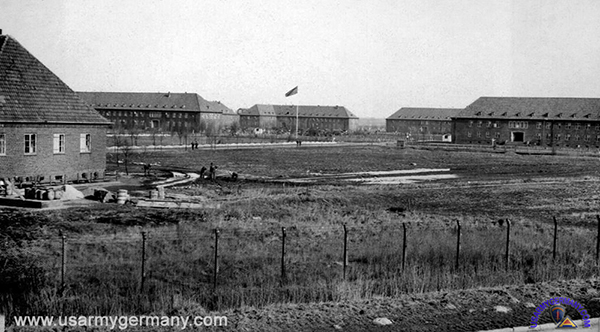
Early post-war photo (1946) of the former German kaserne that became the Staging Area
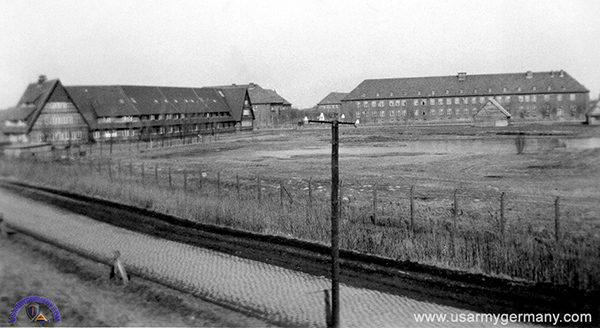
Staging Area, 1946
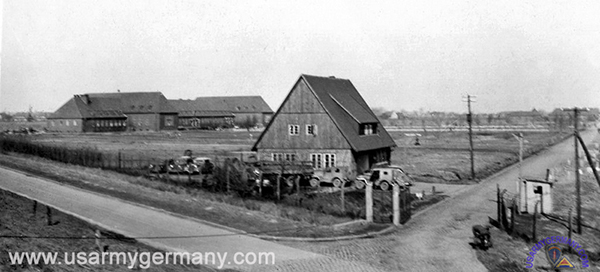
Dock Gate of the Staging Area, 1946
Three Army Officers and two EM drivers were dispatched from Ghent, Belgium, to make an estimate of the situation in Bremerhaven and report to Col Conner, CO of the 17th Major Port. I was one of those O's along with Lt Cols Morrison and Kranz, arriving B/Haven May 5 or 6 (my memory is somewhat hazy on THIS point), however, it was before the German surrender. We met in Bremen and were attached to a Navy GP of Seabees whose mission was to clear the harbor of any mines, POSSIBLY, placed by our enemy. The Navy was in charge of this mission. Upon arriving BH, we were met by a German, who spoke English very well, and a Navy O. We asked where we were to be quartered for the nite. The German advised that the originally planned bldg was presently being occupied by widows/children of deceased German Navy personnel. Now, the Navy man, speaking in such magnificently German ...I was standing right near this incident and understood EVERY word of his German..said: "It is with a grieving heavy heart and with my most sympathy, but you made an agreement, I ask you to keep your promise." GERMAN: "What shall I do?" "That is for you to decide, but you did promise this bldg to us and please clear the area." Whilst the building was being cleared, we three toured the BH facility. Rail lines were in good order..no broken lines, in/out of area. Cranes along piers, all in good order. Warehouse blgds, good order. We noted the EUROPA along side, LOADED with German personnel all looking down at the three of us..They had retreated as far back to the North Sea and with the EUROPA the ONLY place to find a sleep area, took it. Col Morrison said: "DO NOT LOOK UP AT THEM" ... I was ready to go aboard and examine THAT facility Spent the nite in the designated building. Next day or two the Navy cleared the harbor..found no mines Went to examine Turning Basin and discovered the it had been burnt to the water line. Bremen, set afire on a Sunday afternoon by a NON NAZI; the fire was set with deliberation and was too much to extinguish and destroyed the Bremen. I don't know when this happened but was a Dredge Outfit also there. CO was Capt Pine and he was with us. He had been ordered to clear the Turning Basin to 29 feet .. EUROPA was at 28 feet; the E was to be used as a troopship for returning troops. A General O came down to visit us and spoke with Pine about how slow he was proceeding and accused Capt Pine of clearing the silt from the Turning basin to 30 feet Pine broke out with a big grin and said to the General, "Sir, if the bottom of the EUROPA is damaged, will it be your problem OR mine?" General took his cap and left Soon three Liberty ships came in .. as a test of the facilities. Everything worked out well. When the 3 Liberty's came in and I saw OUR flag .. I became emotional and cried with joy. Of 110 O's (in the 17th Major Port) only 5 still survive (as of July 2005). Leon Kline |
With the establishment of the depot here in Bremerhaven, the first step (in) setting up a system which makes it necessary for all men either returning to, or coming from the "States" to go through to go this staging area, has been taken.
The merging of the Second Depot, which has come up to Bremerhaven from Namur, Belgium and the Third Depot which at one time was located in Marburg, Germany is one way of grasping the scale which this depot plans to operate on. Accomodations for handling 14,000 men at one time are being arranged. Four air hangars, each capable of billeting 2,500 men at one time will handle the brunt of the incoming troops. There are other buildings in the Staging Area which will handle the remainder of the men if necessary. Between 18,000 and 20,000 men are expected each month.
The responsibility for the smooth operation of the depot falls on the shoulders of Colonel James Pirtle, commanding officer of the depot. It is his responsibility to see that all personnel in the depot are given the necessary attention to get them where they are going in the shortest possible time. The officers and men working under and with Colonel Pirtle are a trained group, each acquainted with his own duties and each helping speed up the process in every way he can.
1) On VE-Day, the Third Replacement Depot was located at Tannenberg Kaserne in Marburg. The article is incorrect in that the 3rd Depot did not move to Bremerhaven, it remained at Marburg. In May 1946 the replacement depots remaining in the ETO (2nd, 3rd & 17th) were realigned, with the 2nd Replacement Depot in Namur, Belgium moving to the Staging Area in Wesermünde (Bremerhaven) and merging with the 3rd Depot at Marburg. The replacement operation in the Staging Area became known as the 3rd Replacement Depot (Forward). The 3rd Depot at Marburg would eventually be redesignated as the 7720th EUCOM Replacement Depot in May 1947 without any change in location or functions.
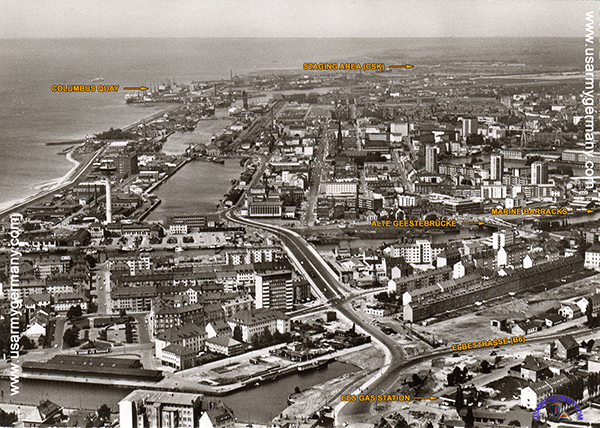 Location of the QM Service Station, Elbestrasse (Webmaster's collection) |
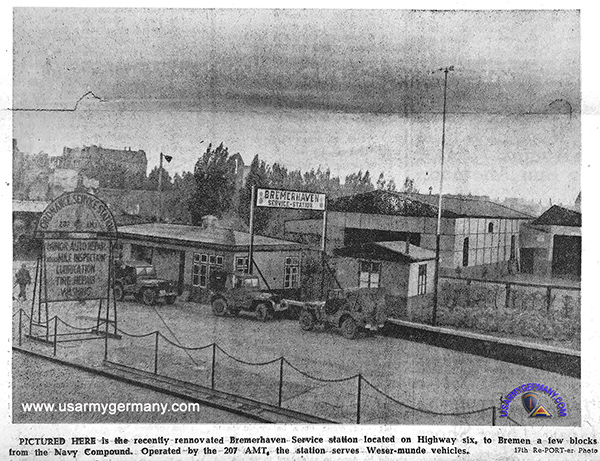 Renovated QM Service Station, 1946 (Webmaster's collection) |
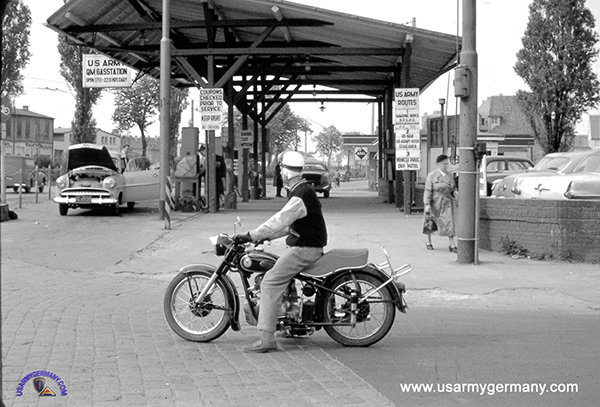 Service Station in the 1950s (Webmaster's collection) |
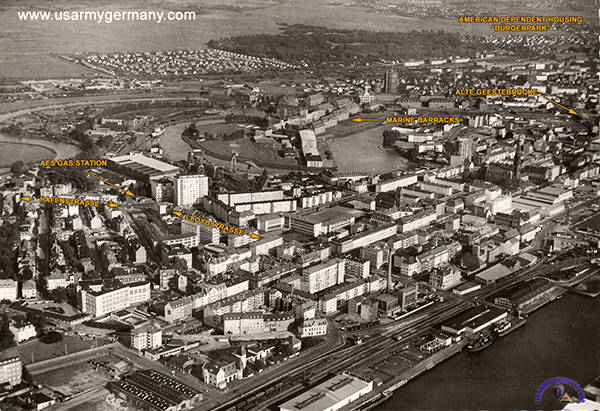 Quartermaster Service Station, Hafenstr./Lloydstr. (Webmaster's collection) |
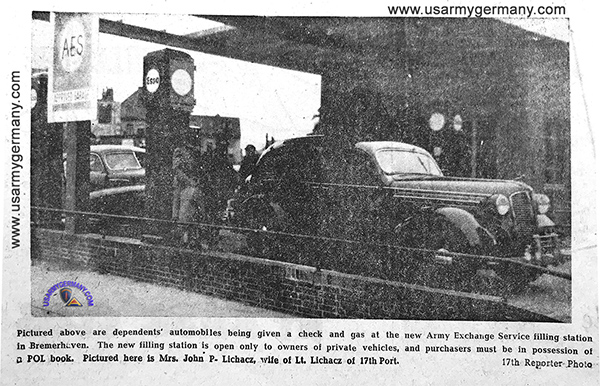 AES Service Station, Hafenstr./Lloydstr., 1946 (Webmaster's collection) |
It is to serve as an up-to-date state-side gas station, with all the facilities for the care of vehicles. Car washing, greasing, auto repairs, painting, and everthing pertaining to cars is open to customers. A wrecker service in the garage is available 24 hours a day.
Operating under the command of Colonel Ashe and Lt. Eichler, the new station run by Murray L. Rosen, Hq 17th Post Co, will be open daily, exept Sunday, from 8:30 to 11:30 in the morning, and from 1 to 5:30 in the afternoon. Wednesday hours are from 8:30 to 11:30 only.
All civilian cars and civilian jeeps may obtain service here upon presentation of a POL book of coupons, which may be obtained at the PX.
The first load of cars to call at the new station were 46 new Plymouths, enroute to Frankurt. Although still in a state of incompletion, the new station is already open for business.)
Personnel arriving at the Bremerhaven train station from Army posts in southern Germany, can reach the vehicle proceesing center in the Staging Area by catching an Army shuttle bus that operates between the Hauptbahnhof, the Dependents' Hotel and the Staging Area on a 30-minute schedule.
Dependents live in three areas of Bremerhaven: Speckenbüttel (near the Staging Area), Lehe (near the Army hospital) and Bürger Park (near the Bremerhaven train station).
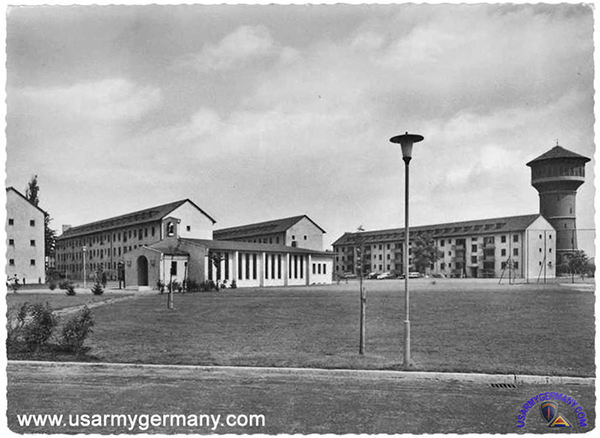
Am Blink Dependent Housing in Bremerhaven, 1950s (German postcard)
The installation covers two general areas, one north of and south of the Bremerhaven Army Hospital.
The housing includes single family, two family and multi-family units, most of which were built in 1953.
The service members and authorized civilians who arrive at Bremerhaven to either pick up their (inbound) vehicle that has arrived from the States or drop off their (outbound) vehicle for shipment back to the States will visit the VPC Inbound or Outbound Section respectively for processing.
Inbound Section.
The VPC at Bremerhaven is the busiest vehicle processing center in Europe. In 1982, 26,000 privately-owned vehicles were shipped from the States to Bremerhaven. (A slightly lower number of POVs were shipped back to the States.) Many of the vehicles come and go aboard three roll-on, roll-off ships - the ADM W.M. CALLAGHAN (AKR-1001), the USNS METEOR (AKR-9) and the USNS COMET (AKR-7).
More than 200 cars are processed each day during the summer months. (Summer is invariably the busiest season; that is when most military personnel PCS and movement of POVs parallels the movement of people.)
For all inbound cars, the paperwork begins at the Vehicle Registry Window. Customers must pass through six separate stations at the VPC to complete the inbound processing.
The one that many motorists are apprensive about is station five - the Inspection Station (located at Bldg #104). About 20 percent of vehicles fail the inspection - for various reasons.
Motorists whose cars failed the inspection will need to take their American car to the AAFES garage (Bldg #128) on post or, in the case of a foreign car, to a reputable German garage in Bremerhaven to have the cause of failure fixed. Once the problem has been resolved, the motorists must return to station five and show the bill to the inspector for approval. (The AAFES garage at CSK repairs about 900 cars a month.)
At the last station, the motorist picks up their tags and registration. Once the tags are installed on the vehicle, the motorist can pick up their registration and begin the long trip south to their home station.
(Webmaster request: If anyone has photos and/or stories of their experience with the VPC, please contact the webmaster (see email link at top of page).
| US Naval Advanced Base, Bremerhaven BREMERHAVEN, GERMANY, U.S. NAVAL ADVANCE BASE, 1945 - Germany surrendered unconditionally on 7 May 1945. On I June, Drew 4 and Drew 6 (Drews were units ready to establish overseas harbor facilities) were decommissioned and then recommissioned as Naval Advanced Base Bremerhaven and NAB Bremen, respectively. The activity at Bremerhaven consisted of an advance base, a salvage group, a Construction Battalion Unit, and a fifty-bed dispensary. On 1 July 1945 the following change in the organization of U.S. Forces Europe became effective: Commander Naval Forces Germany assumed operational command of all U.S. naval forces in the European Theater of Operations (ETO), and reported and became responsible to the Supreme Commander Allied Expeditionary Force; and on 11 November NAB Bremerhaven and NAB Bremen were redesignated as NAB Weser River, TF 124.2. Naval personnel on board approximated 256 officers and 1,495 men, and headquarters was moved to Bremerhaven. On 1 November 1946 the USN Port Director, Bremerhaven, was disestablished and port control was transferred to the Office of the Military Government (OMG). As of I January 1948, the mission of the naval forces command, through the OMG for Germany, was to care for former enemy naval vessels until they were disposed of; to dispose of certain former German merchant vessels assigned to the United States; to dispose of enemy captured war materials; to support and assist U.S. shipping; and to furnish logistic support to Commander Naval Forces Germany (COMNAVFORGER), Commander in Chief, Naval Forces Eastern Atlantic and Mediterranean (CINCNELM) in London and, as required, to fleet units visiting the Enclave (foreign unit on German soil) and European waters. In 1950 Headquarters COMNAVFORGER was moved to Heidelberg. On 11 November of that year the Chief of Naval Operations directed the disestablishment of NAB Bremerhaven and the establishment of Naval Activities Bremen Enclave, effective 1 July 1951, with military control vested in COMNAVFORGER and management control under the CNO. A new mission issued at this time directed that the activity be prepared, organized, trained, and equipped for combat operations incident to the establishment and conduct of port operations in any port on the continent of Europe. In addition it would train officers and men to perform military demolition, radiological safety, and artificer duties. Last, it would provide logistic support to other naval activities in Europe. Among the last were the staff of COMNAVFORGER in Heidelberg; a Naval Technical Unit in Berlin; CINCNELM in London; fleet units visiting the Enclave about Germany and European waters; and Communications Unit 8, which would serve U.S. naval activities in Germany, naval forces in the Eastern Atlantic, and the MSTS at Bremerhaven. Authorized personnel complement was 20 officers, 199 men, and 186 German civilians, the last paid for out of the costs of occupation. On 24 March 1950 there was also established a Rhine River Patrol Unit. A separate command with its own commanding officer, the 12 officers, 193 men, and 57 German civilians would conduct training in boat handling, river navigation, and demolition, and patrol between Bergen and Karlsruhe. As of March 1952 the Bremerhaven Enclave had on board the U.S. Naval Advance Base; Communication Unit 8 and Communication Unit 32 (half team); Minesweeping Readiness Unit; Weser River Patrol and Security Unit; Ship Maintenance and Repair Facility; Special Projects (the USS Northwind and USS Westwind); and a combined MSTS/NCSO. BIBLIOGRAPHY A. "Monograph Histories of U.S. Naval Overseas Bases. Vol. 1. Atlantic Area. 22 December 1953" (Washington: Naval Historical Center, Operational Archives Branch). |
IRO Camp Now Depot CAMP GROHN, Dec. 27 (Special) This Bremen Enclave post, once a German artillery casern and later an International Refugee Organization camp, now is operating as a busy replacement depot. The 307th Replacement Depot, represented by the 320th Replacement Bn here, is responsible for the processing and assignment of personnel arriving in Europe. It is the first Army post the newcomer to Europe sees in Germany. The newly arrived men are billeted, assigned, and begin processing. After receiving a partial payment and six hours of orientation on all aspects of an assignment in Europe, a thorough classification and assignment interview is given each man by experienced personnel specialists to determine his job qualifications preferences. Approximately four days later, the soldier is sent to his permanent duty station in Europe. Alien Enlistee Section Camp Grohn also is the site of the Alien Enlistee Section of the 307th Replacement Depot. In this section, aliens are enlisted in the Army under provisions of the Alien Enlistment Program. Foreign nationals from nations not in the NATO structure or receiving Marshall Plan aid are accepted into the Army and receive their initial processing before proceeding to the U.S. for basic training. Camp Grohn' s location in the Bremen Enclave puts it close to the Bremerhaven Port of Embarkation and enables men to be assigned to stations throughout Europe with a minimum of wasted time. Under the supervision of Lt Col Frank J. Viola, battalion CO, Camp Grohn is being expanded and improved to permit the efficient and rapid processing of replacements for duty throughout Europe. |
| LDCK provided
the comforts of home By Staff Sgt. John Brooks Assistant editor Lucius D. Clay Kaserne is the only kaserne in Germany built specifically for U.S. Army troops. Construction began in 1977 and was completed in 1979. The German government spent more than 170 million Deutsch Marks, while the United States added more than 98 million DMs in building costs. The governments of Germany and the United States decided to locate the kaserne in the area of Osterholz county in northern Germany to add an American presence to the Northern Army Group. The 2nd Armored Division (Forward) was assigned to LDCK upon the kaserne's completion. The kaserne's construction called for modern, well built housing for single soldiers to be located on post. There were no quarters available either on post or in the local community for military family members, so several complete housing areas were needed. German contractors built over 1,000 sets of quarters for U.S. families in Osterholz-Scharmbeck and the surrounding communities. |
|
The Talley Library, which is now closed, contained over 11,000 books aswell as video tapes and compact discs available for checkout. The Crumby Bowling Center is a 12-lane facility with a pro shop and snack bar. The Post Exchange complex contains a theater, hot dog and popcorn stand, class six store, burger bar, banking facility, shopette, barber shop, beauty shop, flower shop and Stars and Stripes bookstore in addition to the main store. There is a Burger King on post as well which adds a touch of home. Prior to drawdown, the 2AD Education Center served 400 people per week through 11 educational programs sponsored by five colleges. Middleton Gymnasium, opened in 1980, offers patrons five racquetball courts, saunas, weight rooms, and Nautilus equipment. Also located on post are a health clinic, dental clinic, a new, 61,000 square foot commissary, Kidd Softball Field, Kramer Softball Field, Murray Soccer Field, the Davila Combined Arms Range, and the Neberman Multi-purpose Indoor Range. Given the restricted German terrain, the two ranges were built to allow for sub-caliber firing and indoor qualification. The firing range facilities, coupled with the Stinger air defense training facility, the battle simulation center, and various other training simulators on the kaserne, helped make Clay Kaserne one of the best equipped in Germany. Currently, 2AD (-) is in the process of fulfilling its final mission -- inactivation. Due to the restructuring of the U.S. Army, 2AD has been ordered off the active duty roles, ending more than 50 years of continuous service. Lucius D. Clay Kaserne is scheduled to be turned over to the German government during the last quarter of Fiscal Year 92. Discussion continues about the future use of the installation. |
| Related Links: US Army Fire Department in Bremerhaven 07 May 1945 - 30 June 1993 Interesting history with some photos of the Fire Department operated by the Army, manned by German civilians in Bremerhaven. 6913th Radio Squadron (Mobile) - Arlen Trapp's great site dedicated to USAF Security Service units stationed in Bremerhaven from 1951 to 1968. Check out the photo pages - wonderful pics of the Bremerhaven kasernes NSGA Bremerhaven, Germany - Karl "Kris" Kristiansen's wonderful web site dedicated to the Naval Security Group Activity that served in Bremerhaven from 1953 to 1972. LOTS of great photos of Bremerhaven installations and surrounding area. Weser and Rhine River Patrols - Andrew Baggs' very interesting web site presenting the US Navy's units stationed along the main rivers of Germany US Navy in Germany - A Yahoo Group (you have to register) hosted by veterans of the US Navy in Germany for former members. Several photos of US Navy patrol craft used in Germany. |
